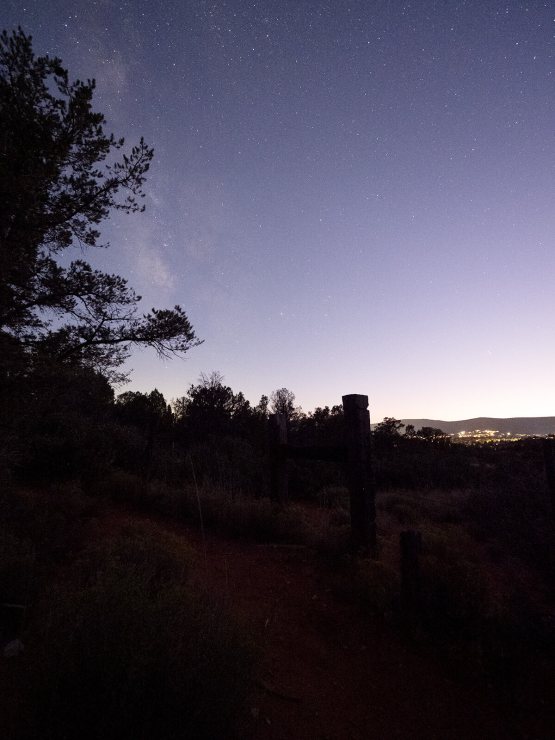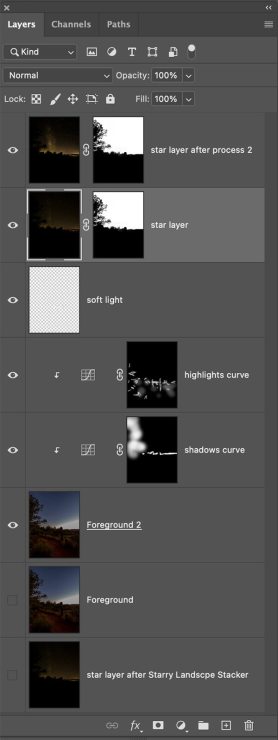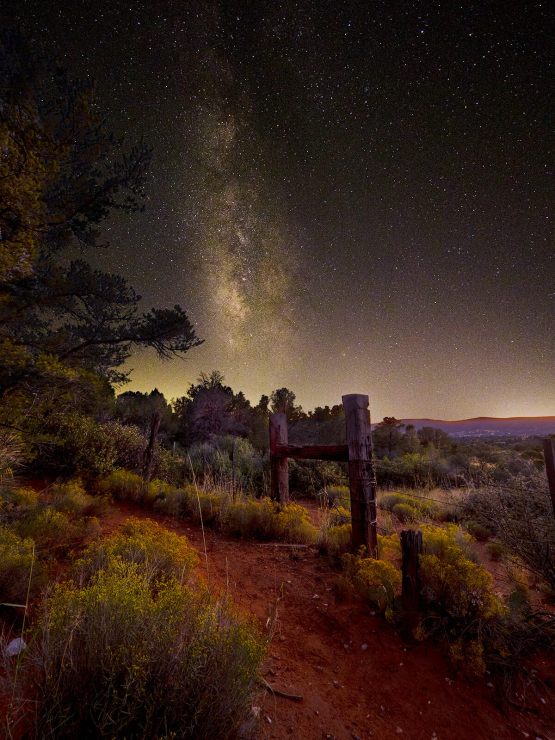When creating Milky Way photography images, the foreground is extremely important. Foregrounds make your Milky Way image different than others. So how do you light a foreground in the dark when photographing the sky?
Milky Way photography for foregrounds in the dark
In order for the Milky Way to be best captured, dark skies need to be prevalent. That means light pollution or the moon can cause the stars to fade from view. Picking a Dark Skies Community gives you gorgeous heavenly rendering but can leave your foreground a dark void having little or no detail.
One possibility is use a black silhouette against the stars. If that doesn’t work for your foreground, read on.

Lighting the foreground manually
If you have a dynamic subject near the camera light painting that subject can be an answer. Be aware that this technique has some down sides. It can take away your night vision for a time. It can disturb wildlife. It can make fellow photographers working the same scene to become vexed as well.

Low level lighting
On dark nights, low level lighting using a light that is only as bright as the stars can be an answer as well. Place a VERY low level light 20-40 feet to the side of your foreground as high as possible. A small light stand can be a help.
Then, take an LED light panel such as the Falcon Eyes F7 and turn it down to 1%. Then cover it with a white translucent cloth. Add cloth layers until it can hardly be seen by the naked eye. It will be bright enough with your small apertures and long exposures to render on the sensor.
A major benefit versus light painting is that you can repeat your star photo captures without having to try to replicate light painting each time. Your lighting will also be more natural and smooth over the scene.
Ambient light

If there is a small amount of light pollution nearby it may cast just enough light to show your foreground. This can come from the glow of a town or even a street light that is out of frame. You may still need to do a blend of your foreground with the starry sky depending upon the brightness of the light. Experimentation and bracketing are key.
Another ambient light source can be lunar. When the moon is just coming up, or setting, it can work just as the time around sunrise and sunset adds depth and dimension. When the moon is 10–20 percent illuminated, it can give you a great cross between having a foreground that is lit but still enough darkness that the stars are still quite visible.
Milky Way Photography blend

If you have the time and inclination, get to your location just as the sun goes down. There will be residual light before official night. Blue hour, nautical twilight and astronomical twilight will provide enough ambient light for your scene.
I highly recommend making brackets at each of these differing light conditions. You can pick later which will blend the scene best with your Milky Way sky.
More Milky Way photography
It’s technically getting close to the end of Milky Way “Huntin’ Season” as the Galactic Center is moving below the horizon. That doesn’t mean you can’t practice your Milky Way photography techniques as the band of stars will still be visible just lacking the star of the show.
Here are some links to learn more about photographing the Milky Way:
- What are the best camera settings for Milky Way photography?
- The ultimate chess game: Capturing and processing the Milky Way
- Creating a Milky Way photograph at Joshua Tree National Park
- Milky Way spotting in fire country.
You can find more articles by clicking here.
Yours in Creative Photography, Bob
Tell your story with the second annual Visual Storytelling Conference!
Experience four days of interactive, online training sessions featuring a range of educational content with experienced photographers and content creators. This free event kicks off with a series of technical boot camps to build essential skills, followed by live, online sessions on photography, video, business and social media. Join live from March 10-13, 2022!
